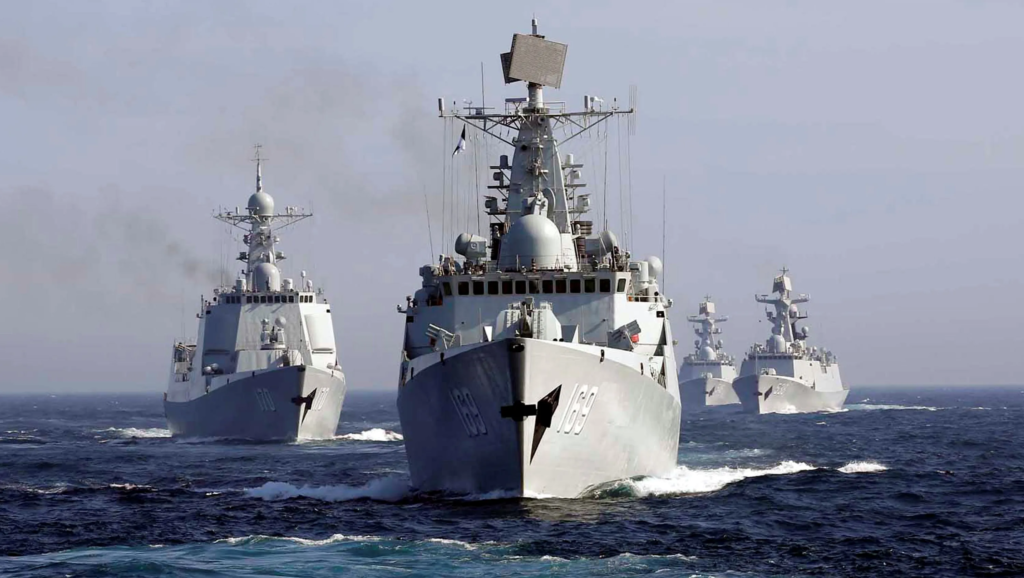A Message on Many Fronts: China and Russia’s Joint Naval Drills in the South China Sea

On July 14, 2024, China and Russia kicked off their annual joint naval exercise, “Maritime Joint-2024,” in the South China Sea. This event transcends a routine military exercise, emerging as a multi-faceted message on the global stage.
A United Front Against the West
One key message is the demonstration of strengthened military cooperation between China and Russia. The stated goals of enhancing their ability to counter maritime threats and ensure regional stability highlight a shared strategic vision. This comes amidst strained relations with the West, particularly the US. By showcasing their combined naval might, China and Russia aim to project an image of solidarity and a counterweight to Western military dominance. This united front is a significant development, potentially influencing the global balance of power.
Bolstering Territorial Claims in the South China Sea
The location of the drills in the South China Sea adds another layer of significance. China has long asserted extensive territorial claims in this region, often to the strong objection of its neighbors and the US. These exercises can be seen as a deliberate attempt to bolster China’s claims and deter challenges to its authority in the South China Sea. The drills serve as a powerful symbol of China’s commitment to its territorial stance, potentially raising tensions in the region.
A Response to Western Criticism
The timing of the drills is also noteworthy. They come just days after NATO allies criticized China for its stance on the ongoing war in Ukraine. China has been accused of enabling Russia’s aggression through economic and diplomatic support. The joint drills can be viewed as a response to these criticisms, signaling China’s alignment with Russia and defiance towards Western pressure. This defiance could further strain relations and potentially lead to increased military activity in the region.
Beyond Showmanship: Uncertainties Remain
While the drills showcase cooperation, it’s important to consider their limitations. The true level of military interoperability between China and Russia remains unclear. It is uncertain how effectively their forces could coordinate in a real-world scenario. Additionally, the drills are unlikely to significantly alter the regional balance of power in the short term. Existing military capabilities will likely hold steady.
The Global Chessboard: Moving Forward
In conclusion, China and Russia’s joint naval drills in the South China Sea are a calculated move on the global chessboard. They signify a deepening partnership between the two nations and a challenge to the West’s dominance. The long-term implications of these exercises will depend on how the US and its allies respond, how the war in Ukraine unfolds, and whether this newfound cooperation translates into a more formidable military alliance.




















